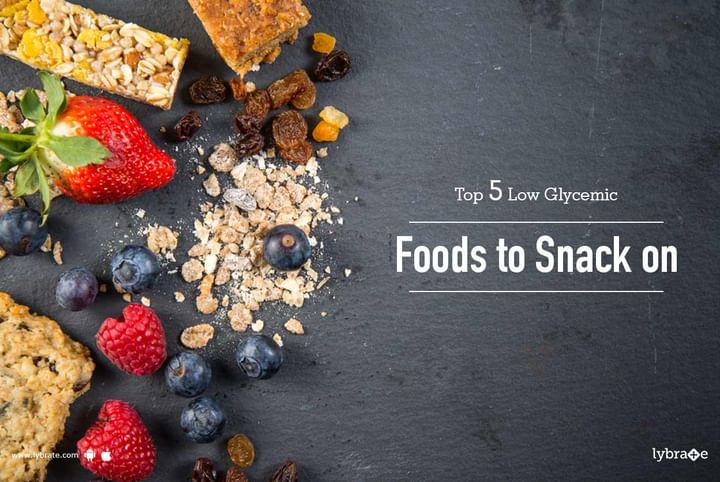Top 5 Low Glycemic Foods to Snack on
Low Glycemic Index foods are those that cause minor changes in blood sugar levels.
Previously, most meal plans designed to improve blood sugar analyzed the total amount of carbohydrates (including sugars and starches) in the foods themselves. GI goes beyond this approach, looking at the impact of foods on our actual blood sugar. In other words, instead of counting the total amount of carbohydrates in foods in their unconsumed state, GI measures the actual impact of these foods on our blood sugar.
Foods that are high on the glycemic index scale tend to raise the blood sugar when they are digested. Low glycemic foods allow a more controlled and steady release of energy in the body. Low glycemic foods have plenty of health benefits; so choosing them as snacks can be a very healthy choice.
Meats and fats don't have a GI because they do not contain carbohydrate.
Below are examples of foods based on their GI:
Low GI Foods (55 or Less)
- All-bran
- Oat bran
- Rolled Oats
- Natural Muesli
- Porridge
- 100% stone-ground whole wheat or pumpernickel bread
- Pasta, converted rice, barley, bulgar
- Sweet potato, corn, yam, lima/butter beans, peas, legumes and lentils
- Most fruits, non-starchy vegetables and carrots
- Soya and Linseed
- Wholegrain Pumpernickel
- Heavy Mixed Grain
- Whole Wheat
- Sourdough Rye
- Sourdough Wheat
- Frozen Green Peas
- Frozen Sweet Corn
- Raw Carrots
- Boiled Carrots
- Eggplant/Aubergine
- Broccoli
- Cauliflower
- Cabbage
- Mushrooms
- Tomatoes
- Chillies
- Lettuce
- Green Beans
- Red Peppers
- Onions
Medium GI (56-69)
- Whole wheat, rye and pita bread
- Quick oats
- Brown, wild or basmati rice, couscous
High GI (70 or more)
- White bread or bagel
- Corn flakes, puffed rice, bran flakes, instant oatmeal
- Shortgrain white rice, rice pasta, macaroni and cheese from mix
- Russet potato, pumpkin
- Pretzels, rice cakes, popcorn, saltine crackers
- melons and pineapple
What Affects the GI of a Food?
Fat and fiber tend to lower the GI of a food. As a general rule, the more cooked or processed a food, the higher the GI; however, this is not always true.
Below are a few specific examples of other factors that can affect the GI of a food:
- Ripeness and Storage time - the more ripe a fruit or vegetable is, the higher the GI
- Processing juice has a higher GI than whole fruit; mashed potato has a higher GI than a whole baked potato, stone ground whole wheat bread has a lower GI than whole wheat bread.
- Cooking Method - how long a food is cooked (al dente pasta has a lower GI than soft-cooked pasta)
- Variety - converted long-grain white rice has a lower GI than brown rice but short-grain white rice has a higher GI than brown rice
If you wish to discuss about any specific problem, you can consult a dietitian nutritionist and ask a free question.



+1.svg)
